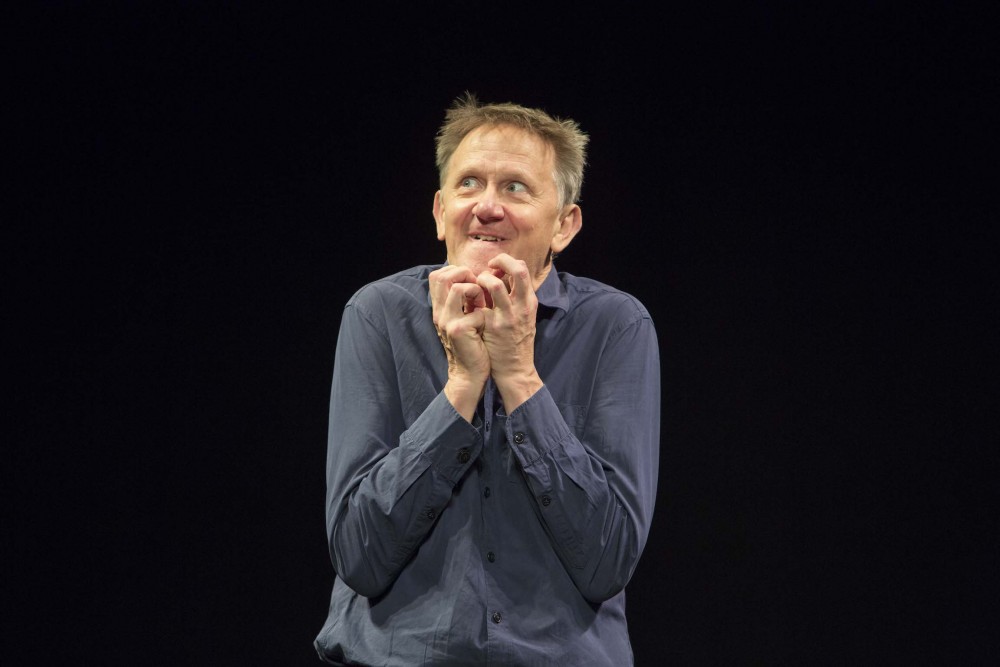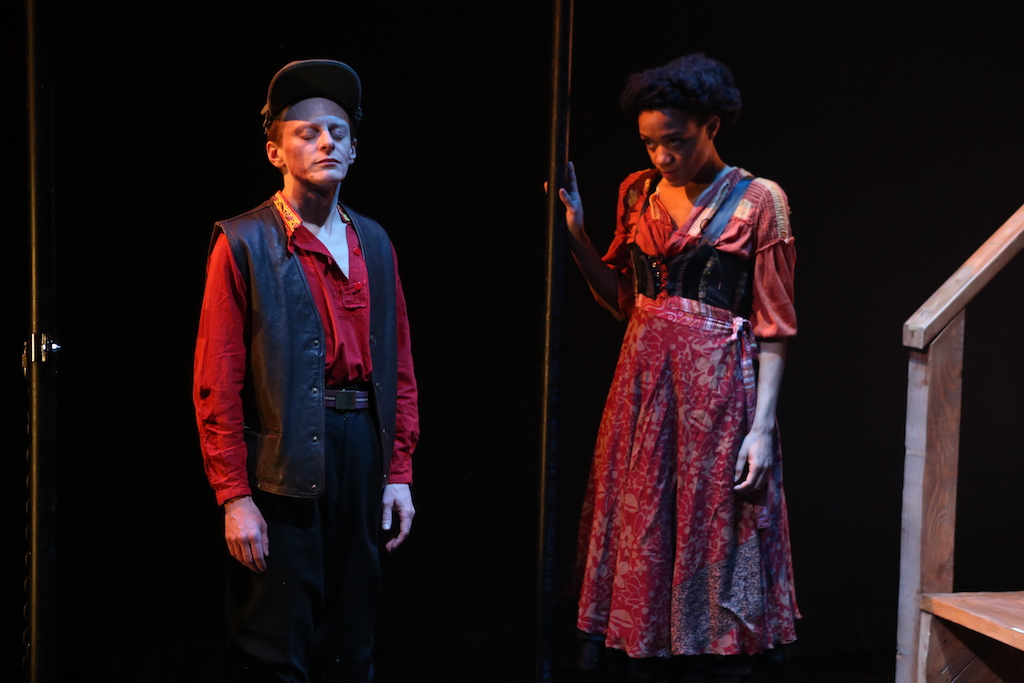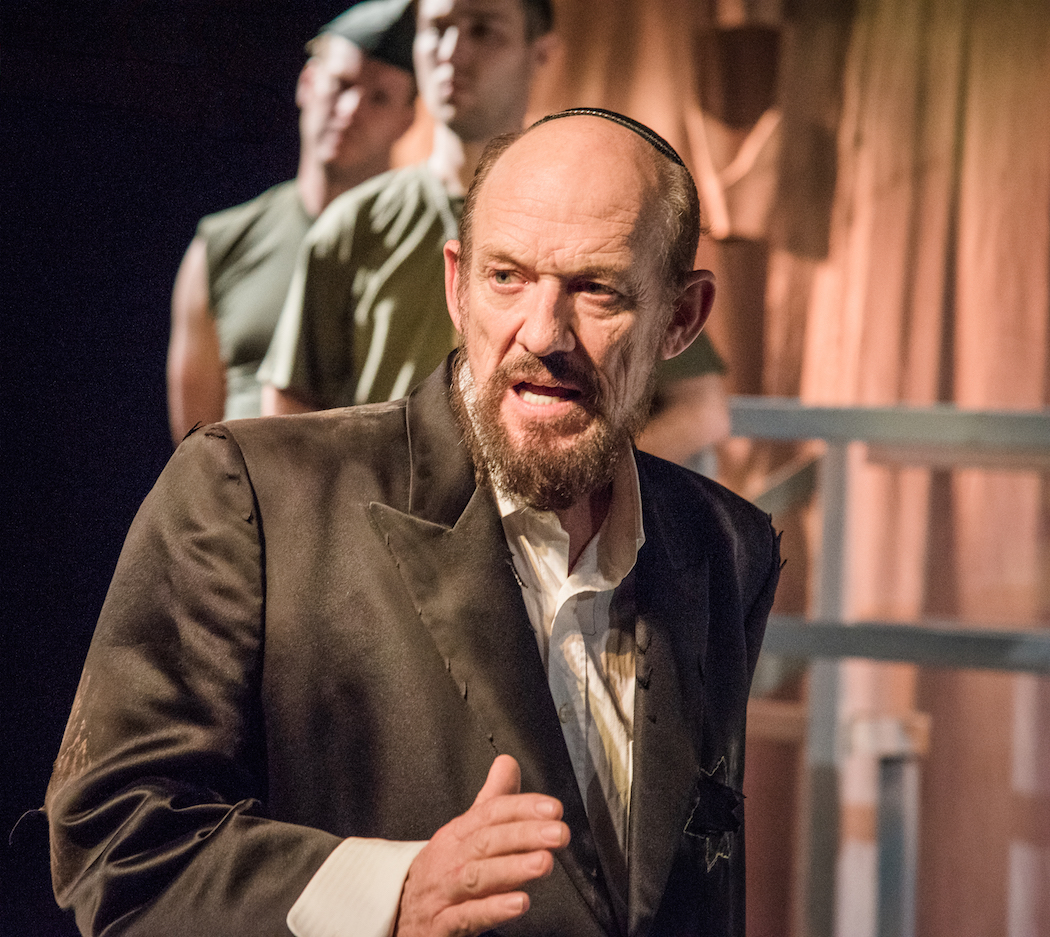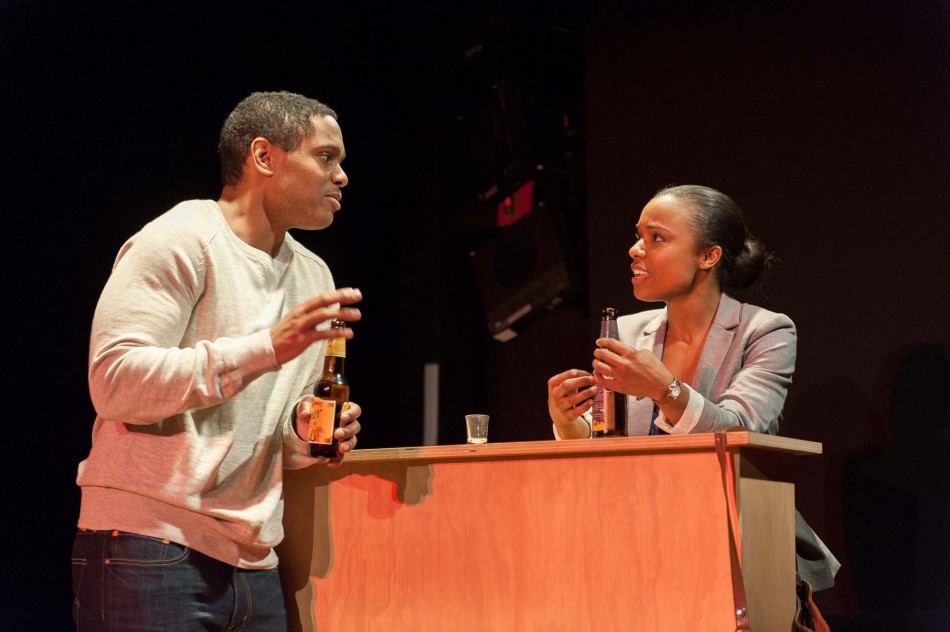
Jos Houben in “The Art of Laughter” (photo by Henry Grossman)
By Samuel L. Leiter
If you love physical comedy in the manner of Buster Keaton and Charlie Chaplin or, to cite more recent exemplars, Bill Irwin and David Shiner, you owe it to yourself to witness the comedic art of Jos Houben and Marcello Magni in Marcel + The Art of Laughter at Brooklyn’s Polonsky Shakespeare Center, presented by TFANA.
Houben is a tall, lanky Belgian, with spiky hair, while Magni is a short, slightly paunchy Italian, his baldness surrounded by a fringe of gray. The delightful pair, who’ve already done some Beckett and would be perfect in Waiting for Godot, are offering a bill of two one-acts, each previously seen independently but never paired before. The material exemplifies their background as students of Jacques Lecoq and work with London’s renowned Théâtre de Complicité (now simply Complicité), of which Magni was a founding member.


Both appear in the hour-long “Marcel,” which, using just a soupçon of words, focuses on Magni’s surprising agility. Looking as everyday as your aging Uncle Jake in a beige, three-piece business suit, he visits Houben to test his continuing fitness as a clown. Houben represents the inscrutable, bureaucratic tester during a scenario that the press materials explain as a comment on the inexorable demands on our bodies of “Time.”
The bare stage is dressed mainly with a swirl-shaped platform (hidden at first under a large, silken cloth), shaped much like a small-scale version of the set Eiko Ishioka designed for the original production of M. Butterfly. Stage props like a rolling clothes rack, a small trampoline, and a folding stool that can be made to jump figure in the action.
In what is essentially an extended, fourth-wall busting, vaudeville sketch, the audience is treated as both Magni’s friend and, when things go wrong, his enemy, although actual audience participation is minimal. His character—like a cross between Chaplin and Roberto Benigni—is a deceptively hapless everyman bumbling with masterful aplomb to hide the infirmities of age as he races through a panoply of clownish shtick under the watchful eye of his implacable tester.
There are tricks with a hat, a newspaper, an umbrella, and a cane, pratfalls, cigarette and matches business, comical handshakes, splashing the front rows with water, finding multiple uses for a cutout crescent moon, chiropractic gags, a deathbed routine, and lots of potentially dangerous acrobatic tumbling and stumbling along the swirling platform’s narrow pathway.


Occasionally, Houben joins Magni, as in a walking race, or a bit where Houben, wearing an equine mask, is the front and Magni, with a long, white tail, the rear legs of a horse.
Poignant and well done as it is, it’s not quite up to the imaginative level of Irwin and Shiner’s brilliant Old Hats, and the many laughs are more modest than explosive. Regardless, fans of clowns, mime, and bodily dexterity will surely find much to love in “Marcel.”
After a fifteen-minute break, “The Art of Laughter” is presented. This is a fascinating, hour-long monologue by Houben, which begins slowly and soon enough ensnares you in what is closer to a lecture-demonstration than a “play.” As charismatic and charming a professor as you’d ever hope to have, Houben—who speaks with only the trace of an accent—stands on a bare stage with only a small table, two chairs, a hat, and a wine bottle, to offer a masterclass in comic physicality and what makes people laugh.
His focus is on the body and its verticality, which he proceeds to break down in terms of each major part’s expressive possibilities. His own lean and flexible frame is perfectly suited for his explanations, during which he offers some really hilarious moments. In fact, I laughed more and louder during his lecture than during “Marcel.” His hilarities include representing reactions to looking at a painting in a modern art gallery by various characters, including animals, like a chicken, a dog, a cow, and a fish.


Houben, who brings a volunteer on stage at a couple of points, instructs us in the art of the double take, different ways of walking, the technique of tripping over one’s own feet, stage drunkenness, hierarchical variations in behavior, reactions to accidents, and even how to act different kinds of cheese. This may be your last chance to see a performance of camembert.
Academics and critics love to analyze laughter in intellectual terms. But if you ask most audiences at Marcel + The Art of Laughter the reason for their mirth, they need only repeat the words of a six-year old cited by Houben about why something made her laugh: “Because it’s funny.”
Marcel + The Art of Laughter. Through November 19 at the Polonsky Shakespeare Center/Theatre for a New Audience (262 Ashland Place, Brooklyn). www.tfana.org
Photos by Gerry Goodstein (except where indictated)






















